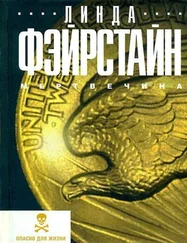The tendrils did not seek out the philosopher cells. They ignored the fibers of the neural bridge. Instead, they went deep, reaching for the stored reserves of sorted elements from which nearly anything could be assembled. And they quested forward too, toward the reef.
“It understands our structure,” Vytet said.
“It studied the structure of the wrecked courser,” Urban answered tersely. He thought again of the scuttled starships and the choice their crews had made. “I’m going to assemble more explosives. Our last chance is to blast it out.”
“We’d have to get ahead of it,” Vytet objected. “I don’t think we can.”
Maybe not. Not while the entity continued to claim more territory with each passing second. Still, he sent a submind to share the idea with the Engineer.
Vytet proposed another strategy: “We can ask Griffin to burn it out.”
Urban spent a precious few seconds considering this, weighing what he knew of the philosopher cells and their vicious temperaments. “No,” he decided. “It would be interpreted as an attack. I don’t know what would happen. Maybe I’d lose control. If Dragon retaliated, we could lose both ships. We have to preserve Griffin .”
He summoned a DI, instructed it to message everyone, encourage them to update their archived ghosts.
The silver shell, now a long cylindrical capsule of unmapped space, continued to expand. The fibers of the neural bridge retracted before it, yielding territory, and pulling the cardinal that Urban and Vytet occupied to a temporary safety.
“We’ll have to fall back farther,” Vytet said, thinking aloud. “Set up a new defensive perimeter. Try again to isolate and eject the main infestation.”
“Go,” Urban agreed. “Do it. I’ll follow.”
Vytet’s ghost slid away. Urban lingered, staring at the projection, at the intrusion’s blank reflective face. He had been master of Dragon for centuries. Now his ship was being taken from him in an assault that echoed the strategy he’d used to capture it long ago—the same strategy he’d used to take Griffin —and worse, he’d allowed himself to be a vector for this thing.
“It’s not over,” he swore.
Dragon had one more, hidden level of defense. The ship was a mosaic lifeform made up of an alliance of organisms—not just Chenzeme and human and the reef with its utterly alien nature. There were also the ancient, nanotechnological governors of Deception Well, secreted within the ship’s bio-mechanical tissue.
Urban did not control the governors. He’d never mapped their structures. Elusive and mostly undetectable, they operated on their own, following their own protocols, but they were present, and he hoped they would act to limit this overt, aggressive expansion. To govern it. That’s what they’d been designed to do—and not by him. They were originally engineered by the forgotten beings who had inhabited Deception Well long before humanity existed.
The governors always sought to integrate new life systems into the existing matrix. But Urban knew from harsh experience that they would attack aggressively if they were under threat.
“Now,” he murmured. “Now would be a good time.”
Wishful thinking… and yet the infestation abruptly ceased its awful expansion. The shell remained a hot zone, its high temperature indicating intense activity, but its perimeter was no longer growing.
He watched the model, waiting through anxious seconds for the expansion to begin again. If he’d been capable of breathing in this stub of electronic existence, he would have been holding his breath.
Then the projection updated. The shell’s silver surface vanished, indicating information on its composition had been obtained.
It took Urban a moment to parse the result, it was so unexpected: The containment shell had reverted to the same white, non-reactive, ribbed ceramic of its original composition, though its shape had changed. It was now a cylindrical capsule with rounded ends—and it had grown huge. Not as long as an outrider, but containing a similar volume.
The tendrils had become branching pipes of the same white ceramic. They linked the new containment capsule to the reef and to the stored matter in the ship’s core.
He didn’t miss the irony: The shell still served its original purpose as a barrier designed to isolate whatever existed inside—with the twist that Urban was locked out, while the entity now had a stronghold within.
No need to wonder what was going on in there. Life could be transferred as patterns of data and reassembled in new locations. That was how ghosts functioned. The entity would have had to transfer only a small selection of molecular tools to initiate the process of assembly. Urban had no way to see inside the capsule, but he felt sure the entity was busy in there, assembling itself or assembling the computational substrate on which it chose to exist. Or both. Eventually, some form of it would emerge.
He remembered the words it had spoken:
We will help each other.
I mean you no harm.
Was it true?
The invasion had stopped. It was no longer claiming new territory. But why? Was it because the entity truly meant them no harm? Maybe it had already taken what it needed and it needed no more. Or had the governors acted to limit its takeover of the ship?
Either way, Urban recognized the reprieve. This was his chance to regroup and eventually, to reclaim his ship.
He started to message the Engineer. Then he reconsidered and expanded the message to include all of his Apparatchiks and Vytet, and Clemantine in both her versions. He ordered them all to stand down, to take no aggressive action.
Vytet rejoined him in the cardinal.
“I’m going to try an experiment,” he told her.
He directed the ligaments to redeploy. They extended toward the surface of the containment capsule, but they could not grip it.
Next he sent in a swarm of robotic cutting lasers. Even before they were all in position, the shell reverted to unknowable silver. He triggered the tools to cut.
Lasers sliced through the sea of bio-mechanical tissue. The capsule responded by growing larger. Its silver surface rushed outward, rolled over the tools, consuming them and cutting off Urban’s connection to them.
He expected the cardinal to be taken next.
“ Go! ” he told Vytet, and together they retreated to the next cardinal node along the bridge. It took a few seconds to realize signals were still coming from the abandoned cardinal. He returned to it. The model showed the containment capsule’s surface as inert ceramic. It had stopped expanding, stabilizing at its new, larger size.
“We will help each other,” he said softly.
“I’ve been wondering about that too,” Vytet said. “Maybe it’s true. Maybe if we leave it alone, it won’t kill us.”
“At least not right away.”
You awake as an attenuated fragment of mind. So much less, again , than you used to be, but this time your recovery proceeds in rapid order, directed by autonomous processes that you designed.
Astonishment floods your growing consciousness as you realize where you are, what must have happened.
I have escaped!
This version of you anyway.
Your gambit worked—thus far—and you are no longer marooned in the void. You resolve that in some far future you will find a means to retrieve the version of yourself you left behind, but for now it is enough that you have achieved existence here, within the body of a starship.
You recognize it as a ship of alien origin, but it is not as you expected from your study of the other. Information flows to you as your senses extend outward and you come to grasp that you are embedded in complexity. This starship is alien, yes, its bio-mechanical tissue is overtly hostile to your presence. But that alien nature is shot through and through with human artifice, human presence, and this pleases you. These people, your people—already you’ve begun to think of them that way—have met the ancient regime and bent it to their will, their needs.
Читать дальше












